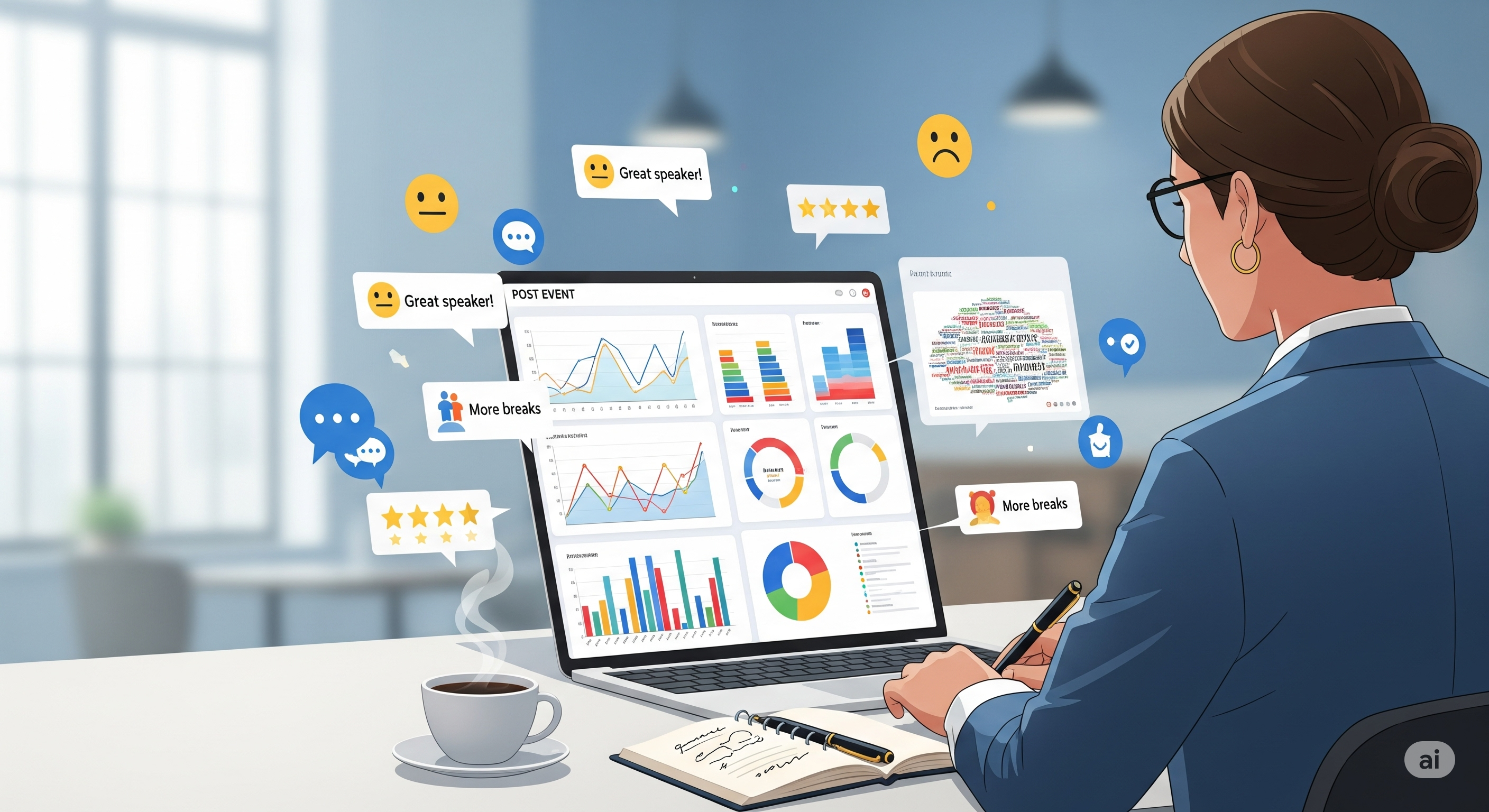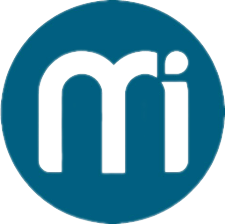The Art of the Post-Event Report: Turning Data into Your Next Big Win

You’ve just wrapped up a fantastic event.
The speakers were great, the attendees were engaged, and the energy was buzzing.
Now that the dust has settled, it’s time for the crucial next step: creating a post-event report. This isn’t just a formality; it’s your roadmap to success.
A well-crafted event report helps you understand what worked, what didn't, and how to make your next event even better.
Think of it this way: your post-event report creation process is like a treasure hunt.
You're sifting through all the data, feedback, and memories to find the gold nuggets of information. The key is to make this process as simple and effective as possible.
Why a Post-Event Report is More Than Just a Document?
Before we dive into the "how," let's talk about the "why." A good post-event report is more than a recap. It's a strategic tool. It helps you justify your budget, prove your team’s hard work, and, most importantly, provide actionable insights for the future. Without an event report, you're flying blind. You might repeat mistakes or miss opportunities simply because you don’t have a clear picture of what happened.
The post-event report creation process is where you bring all the pieces together. It's where the chaos of the event transforms into a clear, organized narrative. This process is essential for stakeholder communication, team reflection, and future planning.
Here’s how you can create a post-event report:
Step 1: Gathering the Right Ingredients (Event Data)
Every great report starts with great information. The first step in post-event report preparation is to collect all your event data. Don't just rely on your memory—gather concrete numbers. This includes:
-
Registration and Attendance Numbers: How many people registered? How many actually showed up?
-
Engagement Metrics: Did people use your event app? How many questions were asked during Q&A?
-
Social Media Analytics: What was the reach of your event hashtag? Who were your top influencers?
-
Financials: What were your total costs and revenues? Did you stay within budget?
-
Sponsor and Partner Feedback: What did they think of the event? Did they feel they got their money's worth?
-
Attendee Feedback: This is perhaps the most important part of your event data. Use surveys, interviews, and direct conversations to get honest feedback. Ask about their favorite sessions, what they would change, and whether the event met their expectations.
The more detailed your event data is, the more powerful your post-event report will be. Make it a habit to collect this information as the event unfolds, so you're not scrambling to find it later.
Step 2: Structuring Your Post-Event Report
Now that you have all your event data, it’s time to organize it. The structure of your post-event report should be logical and easy to follow. A great event report tells a story from beginning to end.
Here’s a simple structure you can follow for post-event report creation:
-
Executive Summary: This is the most important part. A concise summary of the event's overall performance. Highlight key successes and major takeaways. This is perfect for busy executives who don't have time to read the whole report.
-
Introduction/Event Overview: A brief description of the event, including its goals, date, and location.
-
Financial Summary: A breakdown of expenses and revenue. Did you hit your financial targets?
-
Key Performance Indicators (KPIs): This is where you use your event data to show success. Include metrics like attendance, social media engagement, and survey scores.
-
Attendee and Stakeholder Feedback: Share the qualitative insights you gathered. Use direct quotes to make the feedback more personal and impactful. This humanizes the post-event report.
-
Lessons Learned & Recommendations: This is the heart of your post-event report preparation. What went well? What could be improved? Provide specific recommendations for the next event. This shows you're not just recapping—you're learning.
This structure helps ensure your event report is comprehensive and easy to navigate. It turns your raw event data into a compelling narrative.
Step 3: Making Your Post-Event Report Shine
A good post-event report is clear. A great one is compelling. The post-event report creation process isn't just about dumping numbers on a page. It's about presenting them in a way that resonates with your audience.
-
Use Visuals: Charts, graphs, and photos make your post-event report much more engaging. Instead of just listing attendance numbers, show them in a bar graph. Show pictures of attendees smiling and engaging with speakers. This adds a human touch.
-
Tell a Story: Weave the numbers together into a narrative. Start with the event goals and end with how the event data proves you met them. For example, instead of saying "85% of attendees were satisfied," you could say, "The overwhelming majority of attendees left happy, with 85% reporting high satisfaction with the content and speakers."
-
Be Honest and Action-Oriented: Don't just focus on the positives. A good post-event report acknowledges shortcomings. This shows you're committed to continuous improvement. For every challenge, offer a solution or a recommendation for the future. The post-event report preparation should be a transparent process.
Conclusion
Remember, the final post-event report is a testament to your hard work. It should not only inform but also inspire your team and stakeholders for the next event. The journey of post-event report creation from gathering scattered event data to delivering a polished, insightful document is a skill that will serve you well for years to come.
By following these steps, you'll transform the daunting task of creating a post-event report into a valuable exercise that sets you up for even greater success. The effort you put into your post-event report preparation now will pay off in the long run.
- Art
- Causes
- Crafts
- Dance
- Drinks
- Film
- Fitness
- Food
- Games
- Gardening
- Health
- Home
- Literature
- Music
- Networking
- Other
- Party
- Religion
- Shopping
- Sports
- Theater
- Wellness


